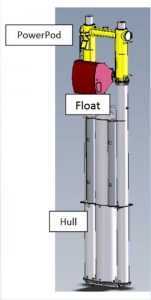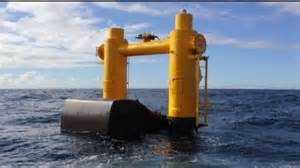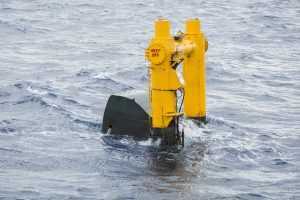EHL Renewable Energy Project
EHL Group and its JV partners, North West Energy Innovations (NWEI) – USA, and Callaghan Innovations – NZ, have completed the final testing of the 20kW prototype AZURA Wave Energy unit at the US Navy Wave Energy Testing Site (W.E.T.S.) off the coast of Hawaii as part of an ongoing Renewable Energy Project. With the successful outcomes, and with the support of the US DOE, development has begun on a full scale commercial version for deployment late 2017.
The below video demonstrate the EHL Azura during this deployment
The EHL Azura is a multi-mode, “point absorber” wave energy convertor developed to target the
growing international market for utility scale renewable energy generation. Unlike
other wave energy converters, the Azura extracts power from both the heave (vertical)
and surge (horizontal) motions of waves to maximize energy capture. Azura produces
power as a result of the relative rotational motion between the hull and float. The
power takeoff (PTO) system is based on high pressure hydraulics and is located within
the PowerPod.
Two hydraulic cylinders, which are driven by an eccentric shaft, are located in the lower le gs of the PowerPod in a flooded compartment. High pressure flow lines penetrate the bulkhead between the dry and wet portions of the PowerPod. All other components of the power take-off system are located in the upper horizontal member of the PowerPod. As the force of an approaching wave causes the float to
gs of the PowerPod in a flooded compartment. High pressure flow lines penetrate the bulkhead between the dry and wet portions of the PowerPod. All other components of the power take-off system are located in the upper horizontal member of the PowerPod. As the force of an approaching wave causes the float to
rotate and the hull to heave and surge, the crankshaft drives the hydraulic cylinders.
The resulting pressure from the cylinders is accumulated and used to drive a variable displacement hydraulic motor, which in turn drives an electrical generator, producingvariable frequency alternating current.
A key feature of the Azura technology is that the float can rotate continuously through 360°or oscillate back and forth, which enables it to extract energy in a wide variety of waveconditions and improves the overall efficiency of the system.
The fully rotating float alsorovides a self-limiting power shedding effect, which makes Azura inherently survivable inopen ocean environments and helps to reduce mooring loads. Azura has very low reserve
buoyancy which allows it to partially submerge under large waves. These benefits are
demonstrated in the photo sequence in the figure below, which shows the Azura operating in
large waves (4-meter, 11-second sea state) off the coast of New Zealand.

For further information on this project
Contact: solutions@ehlsolutions.nz.w3pcloud.com



